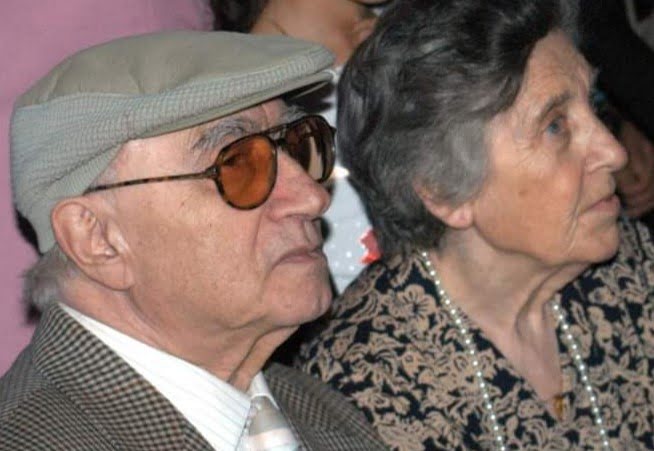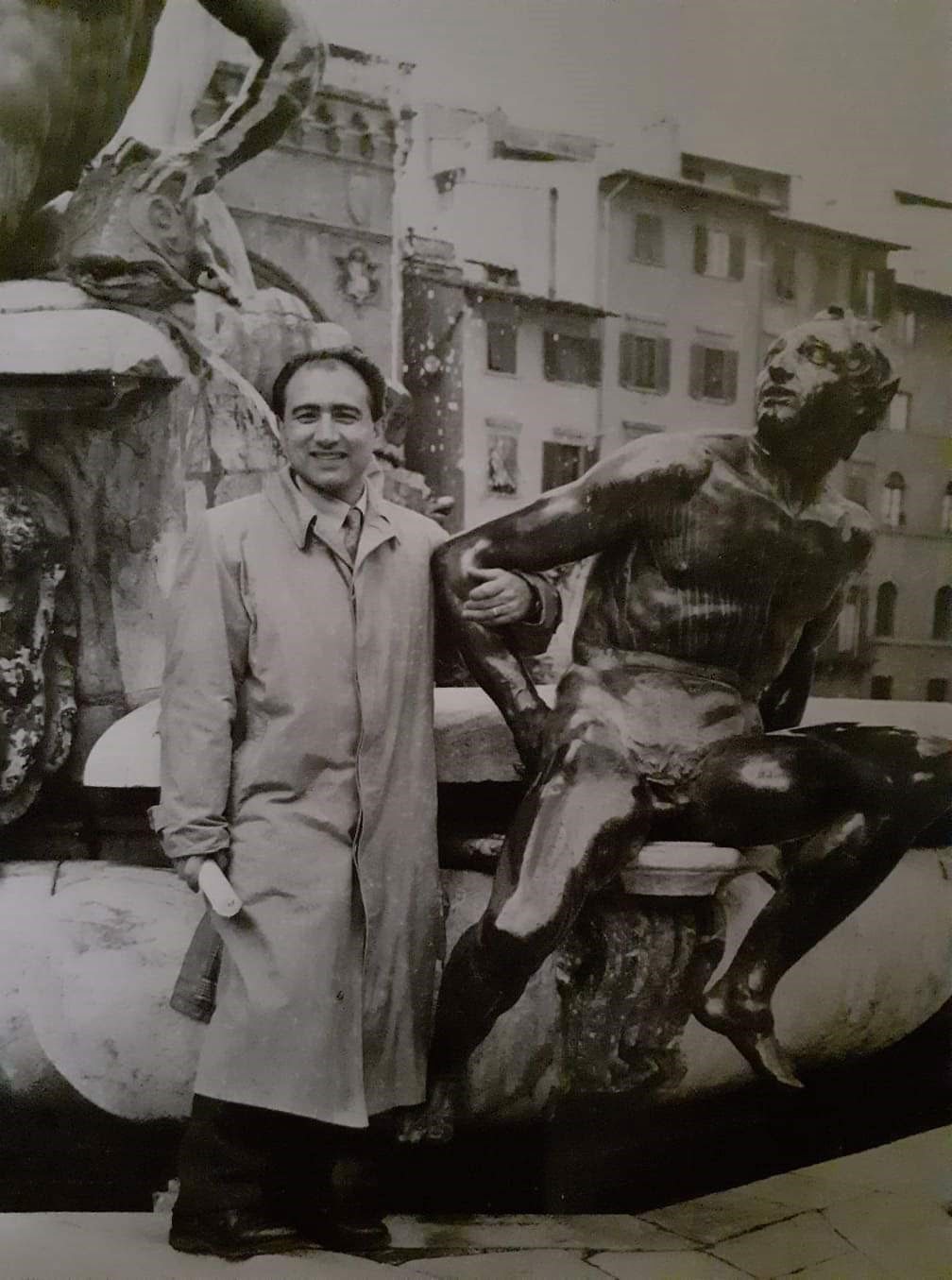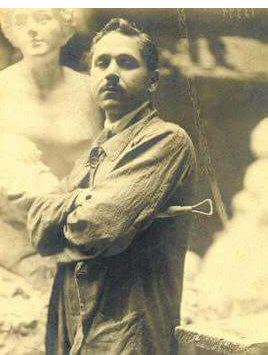Samuel Bugeja - The Person
Page 1 | Page 2 | Page 3 | Page 4 |


The event was known to have been a merry affair with much food and drinks – in sharp contrast to the war-time scarcities of just 4 years before. Little did they know at the time that something had been going very wrong with the photography. Just one week after the event, a heart-broken Uncle Paul broke the news that none of the photos could be developed. Just one blurred photo could be developed. One can imagine the outburst of grand-father Charles when he got wind of the bad news. The only activity he was not participant in turned out to be the only unsuccessful one. Was it an expired spool? Was the booze that over-powering for Uncle Paul? Whatever the cause to the serious mishap, many were disappointed.
Samuel, seemingly oblivious to the bitter outcome, never expressed himself on the matter. He never put much weight to these situations – playing them down. Eventually this trait in my father did eventually lead to a mild kind of unsociability where-by absenting one’s self from family events or important colleague invitations did have a telling withdrawal perception by his general acquaintances. Visibility in artistic circles was hardly ever noticeable. It surely was not due to any sense of condescending attitude by Samuel – he was certainly not the type. Was it because he would feel uncomfortable to mix socially with people high up in the political or professional or business circles? Not quite because I was lucky enough to have witnessed him in perfectly comfortable exchanges with the likes of Profs. Brandi, Archbishop Gonzi, the Duke of Edinburgh, Prime Minister Fenech Adami, Profs. Causa and many other top notch professionals.
The problem Samuel had was not with the genuinely top brass. It was with the pseudo-top brass that he was intolerant - justifiably. As happens within any circle, and the artists circle is no exception, there is infiltration by people that would have made their way up the ladder in a rather dubious way. Art work was no exception, particularly when abstract art was starting to make its advances. When art critics would present comparative analysis between various art works at exhibitions and giving prime of place to abstract works, my father started to develop an aversion to particular elements that would make him feel outdated. Samuel’s work had a particular kind of modern figurative character and he would not trade it with anything else. That is what inspired him and he was comfortable with it. Why should he change his mode of expression just because the abstract form became the trend? Afterall, Samuel believed that both were equally important.
When a particularly challenging work of art had to be completed, Samuel would become a recluse with powerful perseverance and an astonishing stamina. Since these art commissions were ever so often, certain routine events became more an exception than the rule. Those walks in the countryside of the Sliema outskirts in the early sixties on Sunday afternoon began to be interrupted – sometimes for multiple Sundays. My mother would occasionally get upset especially after having started the Sunday very early to prepare the traditional Sunday lunch in style. The weather would be glorious, yet Dad would only have a particular project in mind and off he would go to the back garden studio. Mum would then have either the option of taking us out for the country walk without Dad or else stay put at home. On occasions she would opt to play card games with us or still go for the walk. The walks with Dad were always exciting because he liked playing football with us. He sprinted well and packed a good shot. Mum preferred to admire nature with a sharp observation. Being good at free hand pencil drawing and a photographic memory, many times she would draw us flowers and plants she would had admired during our walks.
It was during one of these ever so rare Sunday walks, my father gave me my first lesson on what was then the European Common Market. Having been in Rome in the mid-fifties for his year-long restoration course at the Centro del Restauro whilst overseeing on behalf of Government the on-going restoration of the famous Caravaggio beheading, it could not be left unnoticed by Samuel that Italy was going through its post-war economic recovery. Italy’s pioneering act of forming the Common Market just a decade after the Second World War 2 was the exciting novelty that brushed away the pains and sacrifices of having to survive four long years as the sole breadwinner of a fatherless village family. My father was carried away by the new spirit that was infecting countries the likes of Germany, France and Italy in particular. How well he explained to me the concept of open markets and free trade – surely the best formula to neutralise belligerence.
What a new horizon had the Rome experience opened up for Samuel! His outlook took an irreversible turn. From the eyes of the mind-set originating out of a small narrow-minded colonial country his eyes were now open to the opportunities of a vast yet united Europe! How pleasantly contagious was that conversation whilst returning home on foot from the Sunday walk! He had just converted a 10-year-old into the European project. It was 1959 and 44 years yet from 2003 – the year Malta became an EU member. How enthusiastically Samuel went to cast his vote for Malta to join the EU! Samuel passed away shortly after, early in 2004. He saw his vision through because in Rome he had lived a change that he had been seeking since his childhood. He had not found it in Leicester in England. Samuel returned back after one year at the Leicester School of Art. His major opportunity was yet to come. It did not take long because he was given the responsibility to accompany the Caravaggio restoration in Rome and simultaneously do restoration studies at the Centro del Restauro in Rome in 1955. It was Rome that really matured my father not just artistically but, more importantly, empowered his personality.

Back from Rome in his mid-thirties, Samuel was in a much better position to fulfil his newly-acquired art of restoring. He was fully trusted in Rome by the much acclaimed Prof. Brandi to the extent that he was given important paintings to restore in participation with the other well-established restorers of the Centro del Restauro. He took the opportunities to travel in Italy extensively to participate in the various restoration works to which the Centro was commissioned to undertake. He practiced new techniques being introduced on highly damaged frescoes such as that of the ‘strappo’. This technique consisted in the transfer of the colour film from the original corroded plaster sub-strate onto a canvas. The canvas would then be stuck onto the new plaster backing that in the meantime was applied on the structural masonry – normally the vaulted main aisles of important churches.

My father had mastered the technique to such a degree that he developed it into a fine art at the Mdina Cathedral and later at St Helen’s Basilika in Birkirkara. Irrespective of recent ideas about conservation techniques, my father had introduced and undertaken an innovative new method of restoring frescoes in Malta from certainly complete ruination had there not been the timely intervention by him at the time. At that time, Rome certainly supported and advocated this method of restoration as the best conservation technique.

Another important imprint Rome had on my father is that profound respect for the Italian culture. His tutorship under Antonio Sciortino had predisposed him to Rome. However, the British influence was so diffused in Malta that few were harbouring deep alternative sympathies to non-British cultures. The Italian culture was not any different though it was only in the Thirties that the Italian language was replaced as the Court’s official language. Prior to leaving for Rome, Samuel was fairly neutral as to what should constitute his dominant sympathies culturally. He could identify himself with both the British as well as the Italian culture. His extremely enriching Roman living had tipped the balance vis-à-vis the British culture. Soon after he returned from Rome he purchased a TV for home – a rarity in Malta at the time. Whenever he was at home, only the Italian national channel was selected. Not that there were much options at the time because the local station transmissions had yet to start. My siblings and I were well exposed to the Italian language when young through the TV transmissions. It served us very well later in life.
That was when my father groomed me in the various aspects of Italian life. He used to tell me about the open spaces in Rome – the piazzas and landmarks. He knew so much on the Rome churches that he would vividly explain them inside out including the various contributing artists. The Roman countryside was another favourite. But more intriguing was the political and economic upheaval that was taking place there. No wonder the Italians still refer to that period as ‘il periodo del boom economico’. The hustle and bustle in the capital Rome was impressive just as much as the Roman propensity to wear a suit even in the hottest of summer days. Samuel’s grooming improved as well and my mother was rather surprised when he frequently wore a suit after his return from Rome. My mother, for family reasons, had not accompanied my father neither in Leicester nor in Rome. The full year’s separation had brought an adaptation exercise in my mother with respect to my father’s changing behaviour after his return on both occasions. The Rome induced mutations in my father had caused her more adjustments.